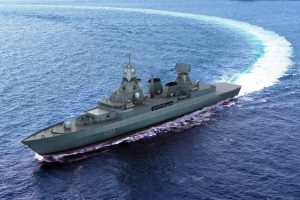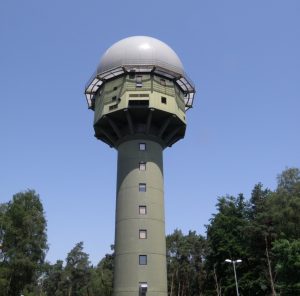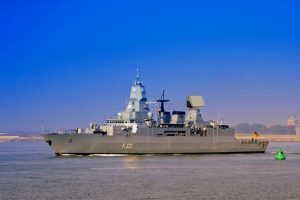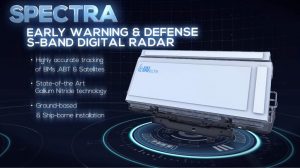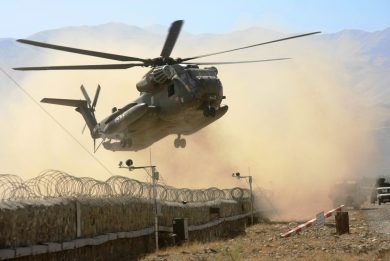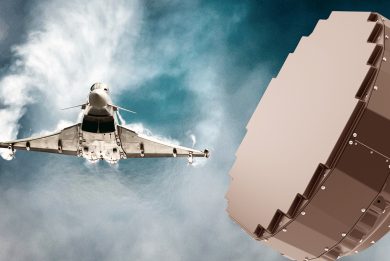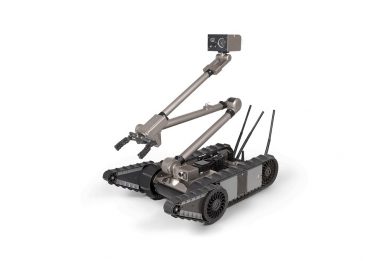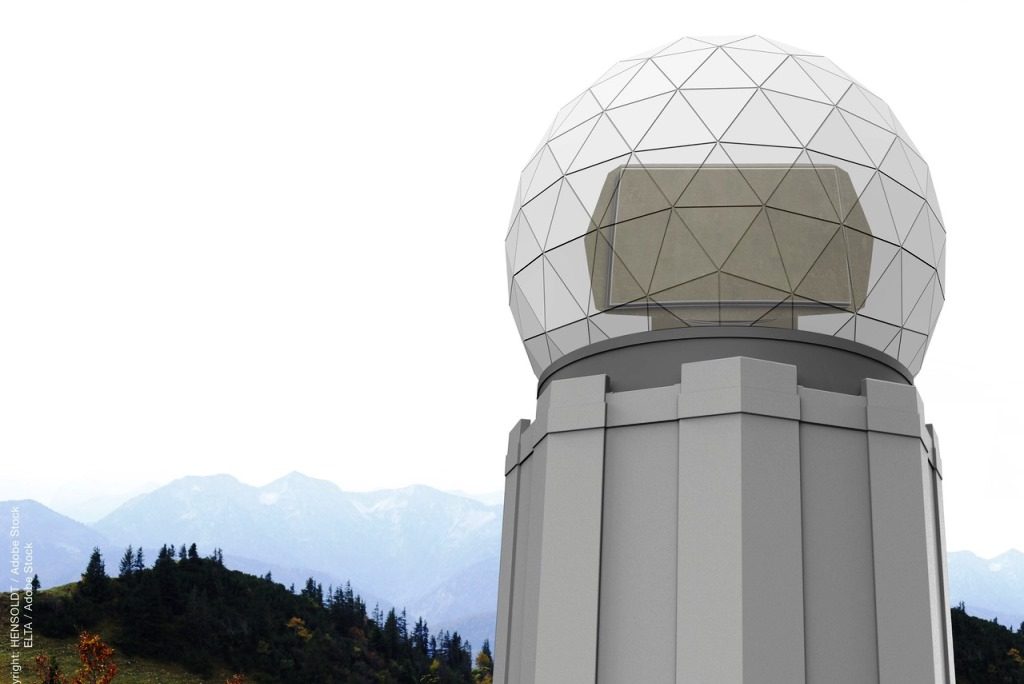
Hensoldt – IAI: new long-range air surveillance and BMD radars for German Armed Forces
By Luca Peruzzi
The Bundesamt für Ausrüstung, Informationstechnik und Nutzung der Bundeswehr (BAAINBw), Germany’s Federal Office for Bundeswehr Equipment, Information Technology and In-Service Support, has recently awarded to Hensoldt and Israel Aerospace Industries (IAI) two contracts for the supply of new long-range air surveillance radars respectively to the German Air Force and Navy. Approved by the German Parliament on last June, these programmes will support the German Armed Forces in establishing a national capability in the field of Ballistic Missile Defence (BMD) in addition to the protection of air space within the “Territorial Missile Defence” concept for national and Alliance defence. Approved in 2018, it represents the national overall architecture for protection against any missile threat, integrated into the NATO IAMD (Integrated Air and Missile Defense).
The BAAINBw selected and awarded respectively on 22 July and 23 August the German sensor solutions provider Hensoldt and Israel Aerospace Industries (IAI) subsidiary ELTA Systems the contracts for the delivery and installation of four long-range radars as part of the “Hughes Air Defence Radar Nachfolgesystem” (HADR NF) programme for the German Air Force and four long-range radars to modernize the sensor technology of the in-service F124 air defence frigates of the German Navy as part of the “F124 ObsWuF ” programme.
Hensoldt entered into a strategic cooperation with ELTA Systems in the field of BMD-capable long-range S-band radars “to supply the German MoD not only with a customized solution based on market-available systems that have been tried and tested in the field, but also provide the German customer with a combination of a national partner for certification and long-term support”, Eyal Shapira, IAI/ELTA General Manager of the Air Surveillance and Counter Rocket, Artillery and Mortar Group, told EDR On-Line, following the award of the contract for the new radars for the German Navy in-service F124 air defence frigates. The overall value of the two contracts is worth around €420 million, according to information released by the BAAINBw and the industrial team.
The cooperation agreement between the two companies sees IAI/ELTA as design authority and Hensoldt as main contractor for the joint development and delivery to the customer of both projects, where the German company, as a long and established partner of the German Armed Force, will bring in the knowledge of certification, specific requirement fulfillment and European approval, alongside long-term supply and support together with training, the IAI/Elta representative explained to EDR On-Line.
Hensoldt and IAI/ELTA will manufacture and supply four long-range radars for the German Air Force under the HADR NF project to replace the same number of radar systems in-service since the mid-1980s in order to ensure the continuous and seamless surveillance of national airspace. “The new radar systems will be installed over the next few years at four locations in Western Germany, on new towers to be built and put into operation step by step”, said the BAAINBw in a statement following the contract award. In addition to state-of-the-art air surveillance capabilities, the new radars will support ballistic missile defence operations, enabling the Bundeswehr to continue providing a decisive contribution to national security in the airspace and to the NATO integrated air defence within the framework of national and alliance defence. In addition, the contract includes the training of the technical, training and operating personnel, an initial requirement for spare parts and the optional delivery of a training and reference system.
Under the “F124 ObsWuF” programme, the Hensoldt-IAI/ELTA industrial team will manufacture, deliver and install four radars of which three on the Sachsen class (F124) air defence frigates and one at the test reference and training (TRT) facility at the Naval School of Technology in Parow. The new long-range radars for air and sea space surveillance, which have received the designation TRS-4D/LR ROT by the BAAINBw, will replace the previously used SMART-L radars on the three frigates from 2025. The additional radar will be installed at the land facility as early as in 2023. In addition to the practical training, there is also the opportunity to test any system adjustment on the radar before being implemented on board, according to the BAAINBw. The new radars will allow the German Navy frigates to contribute to the NATO Ballistic Missile Defense (BMD) in addition to provide enhanced air surveillance capabilities. The contract also includes the supply of latest generation IFF systems.
“ELTA leverages on its experience in air surveillance and BMD radar systems developed in the last decade, including the Spectra, Multi-Mission Radar (MMR) and Iron Dome, together with the MF-STAR in the maritime domain, based on fully digital architecture, high-power radar modules with GaN technology and slew-to-cue software developments, to satisfy the customer with a proven capability already fielded,” said the IAI/ELTA representative. Hensoldt, which equips major German Navy ships with its radars, will manufacture the core components and completely assemble the radar systems.
“The new radars for the German Air Force and Navy being largely identical in construction, they will share the same full digital architecture, hardware and software. This will offer the customer advantages in terms of logistical supply and thus long-term operation of the systems. Moreover, further developments can also be used cross-sectionally and thus be introduced more cost-effectively,” Shapira explained, adding that the new radars will have an antenna with dimensions smaller than the Spectra.
Based on the combat proven achievements of IAI/ELTA products, “the new radars for the German Armed Forces will not only feature state-of-the-art surveillance but also ballistic missile searching, tracking and cueing capabilities, in addition to challenging threats with very small cross section like drones and loitering ammunitions,” the IAI/ELTA representative explained. According to the BAAINBw statement, thanks to the AESA technology, the new radars will be able to detect and track very small and maneuverable targets, with a range of more than 400 km for air targets and up to 2,000 km for objects in earth orbit.
Elaborating specifically on naval radars, “the new systems will leverage on the (fixed faces) full digital architecture MF-STAR solution being integrated on the new Sa’ar 6 corvette for the Israeli Navy, while the software is centered on the BMD capabilities already developed and integrated for other three naval customers including the Israeli Navy, the F124 frigate being the fifth naval project on which the group is working based on the unique requirements of the German Navy”, the IAI/ELTA representative explained.
No further information was released by the industrial team, but according to plans elaborated before the contract award by the BAAINBw, the long-range sensor will not be released for integration on board of the Sachsen-class F124 frigates until the demonstrations at the TRT facility in conjunction with a derivative of the F124 command management system module, have been successfully completed. As anticipated, the current plans foresee the integration of the first long-range radar into the TRT facility in 2023. The schedule for fitting and integrating the new long-range radars into the F124 class frigates is expected to be strictly based on the scheduled maintenance intervals, to maintain the planned platforms availability. The first ship will receive the new long-range radar during its scheduled maintenance period in 2024 and overall activities on the three naval units will be completed in 2028.
This first phase (Stage 1) of the programme, will be followed by a second one (Stage 2) centered on the implementation of the sensors’ basic capability for early warning and slew-to-cue in support of other platforms and effectors for ballistic missile defence. The F124 class frigates will not be equipped with a shooter capability to engage ballistic missiles. The BMD capability will require adjustments to the combat management system and the communication suite. Stage 2 will be aimed at developing and incorporating in the F124 command management system a separate Ballistic Missile Defense Module to reduce integration risks to a minimum, alongside a database for the specific threat classification. An AEGIS module is being considered for the latter package. EDR On-Line understood that Stage 2 is not part of the current contract with the Hensoldt-IAI/ELTA team but will be a further development to be addressed by the industry.
Images courtesy Hensoldt / IAI

